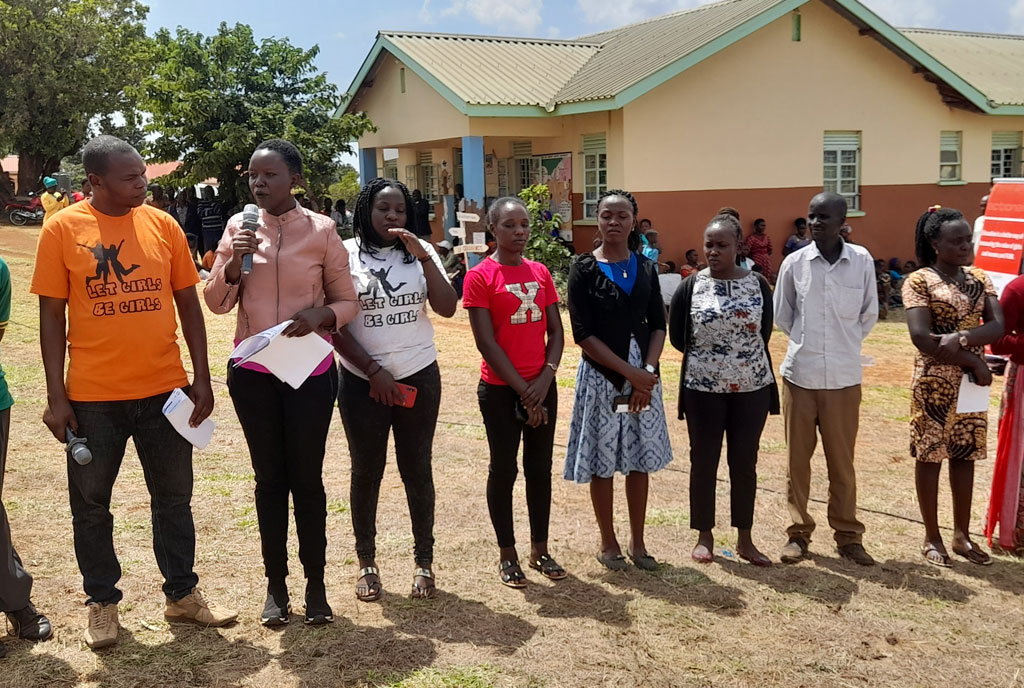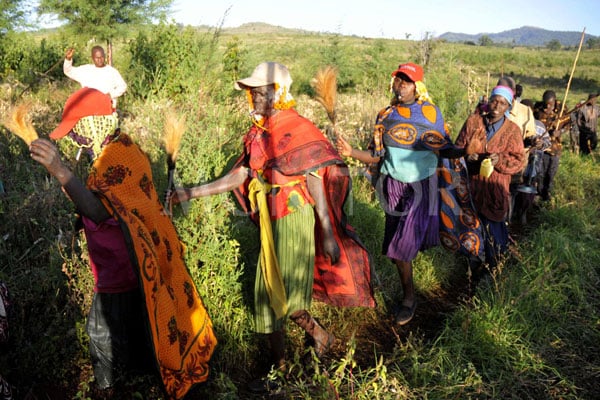Prime
Sebei leaders save 1,500 girls from FGM in past two years

Activists against female genital mutilation present a memo on the vice during celebrations to mark International day of zero tolerance to FGM at Bininyi Health Centre III in Kween District on Monday. PHOTO/YAHUDU KITUNZI
What you need to know:
- Some of the survivors have been enrolled to schools and technical institutes.
A total of 1,500 girls in Sebei region have been rescued from female genital mutilation (FGM) since 2020, Daily Monitor has learnt.
FGM is a practice that involves removing a female’s external genitalia. It is mostly practiced in Kween, Bukwo and Kapchorwa districts.
According to Ms Sarah Chebet, a youth leader in Kween, the girls have been mostly saved by anti-FGM activists supported by ActionAid, an NGO, and local leaders.
“Some of the rescued girls are in schools, others in technical institutes to get skills, while others have been empowered,” Ms Chebet said during celebrations to mark International day of zero tolerance to FGM in Sebei Sub-region at Bininyi Health Centre III in Kween on Monday.
The day is celebrated every February 6, and this year’s theme was ‘Accelerating Investment to End Female Genital Mutilation.’
Shortcoming
Ms Chebet, however, cited laxity among leaders supposed to fight FGM, especially in rural communities.
“People who are supposed to fight the vice, including the law enforcers and other government agencies, have ignored their duties,” Ms Chebet said.
The local leaders and activists said this being an even year, people, especially in the rural sub-counties and neighbouring Kenyan border are preparing for FGM.
Ms Annet Chemutai,25, a resident of Kwosir Village, Benet Sub-county in Kween, said her father wanted to mutilate her on the morning of April 26, 2020 but she escaped and hid in a nearby forest.
“I couldn’t stay in the forest for long, so I decided to go to my grandmother’s home in Bukwo, about 60 kilometres away,” she said.
Ms Chemutai was later reunited with her parents by local leaders and anti-FGM activists after the parents realised that what they had wanted to do was illegal and inhumane.
The government outlawed FGM in 2010, punishing any person convicted with a 10-year jail term.
Although Chemutai survived, many girls and women in the Sebei have been forcefully mutilated.
Mr David Mande, the chairperson of FGM activists in Sebei, vowed to keep fighting the vice until it is stopped.
“Preparation to cut the girls is in high gear. Some girls are smuggled to Kenya to undergo mutilation but we are sure this vice will be defeated with concerted efforts,”Mr Mande said.
Most of the affected sub-counties with increasing cases of FGM are Tuikat, Kaproron, Kwosir in Kween.
Mr Sam Charles Chebet, the chairperson of Kaproron Sub-county in Kween, blamed increasing vice on the traditional birth attendants who cut the women when they go for antenatal care.
“It is becoming difficult to fight the FGM. The percentage of FGM had gone down but it is now on the rise,”Mr Chebet said.
Ms Evelyn Kubarika, the chairperson of Kapchorwa, said they are happy that several girls have been rescued.
Cases rise during Covid lockdown
Ms Sheeba Namulindwa, the coordinator of ActionAid in eastern region, said the practice increased in the region, especially during the Covid-19 induced lockdowns.
“Before Covid-19 Bukwo was at 20 percent, Kapchorwa and Kween stood at 10 percent both but now the vice has rapidly increased to 27 percent in Bukwo, 21 percent in Kween and 13 percent in Kapchorwa,” Ms Namulindwa said.





